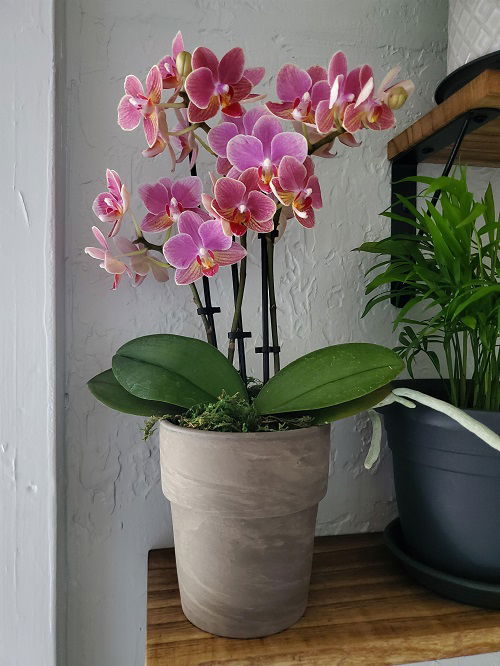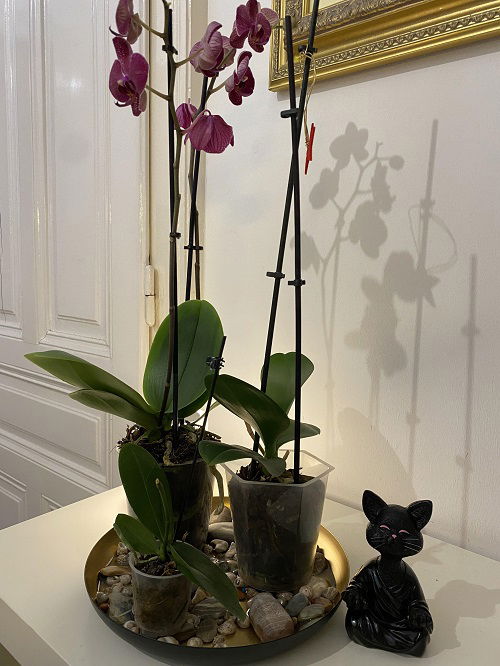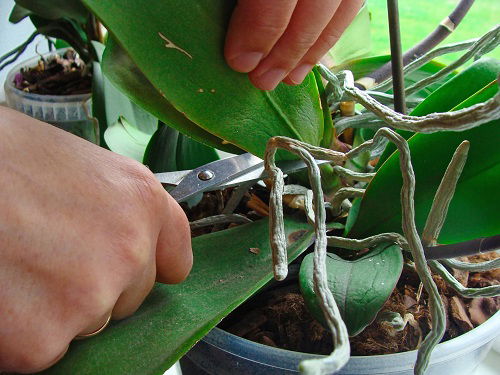What do you Do with Orchids After They Bloom? Don’t just sit back and wait—follow these steps for recurring blossoms year after year!

Clueless about what to do with your orchids after they bloom? Don’t let the anticipation of the next set of blooms overwhelm you. Instead, prepare! We share steps to keep your orchids healthy and ripe for recurring blooms in the coming season.
While different orchids have slightly differing bloom times and durations, we will focus on a classic—moth orchids (Phalaenopsis). Typically flowering throughout the year, this home-friendly orchid is easy to grow and long-lasting. It also serves as a great example of post-bloom care across orchid species.
What to Do with Orchids After They Bloom?
Moth orchids can bloom for several years, often decades, with proper care. After the first bloom, they can produce flowers multiple times a year, with attention to typical orchid care needs like light, humidity, repotting, etc. Let’s explore these steps!
1. Bye Bye Flower Spike!
Orchid flowers fall off in late fall or early winter, leaving the spike barren. When this happens, cut off the spike just above the node using a pair of sterile shears or scissors. This unusual step will actually nudge the plant into producing more branches of flowers in the next blooming season.
Check out this great video on how to cut it properly.
2. Water Consistently
Even as your orchid blooms fade, water consistently without drastically reducing or suddenly halting the amount and frequency. Holding back and infrequent irrigation may be apt for other tropical species, but not our beloved orchids! These plants need regular and ample moisture to stay healthy and prepare for the next bloom cycle.
However, if you were watering after every 7 days, you can reduce it to every 10 days, especially in water.
3. Provide Dappled Sunshine

Plants like the Christmas cactus prefer hibernating in darkness to recover after blooming. But not orchids—they love year-round sunshine during the day, as long as it is filtered and bright. In their native tropical habitats, orchids often grow under the canopy of trees that filter out the sun’s rays.
So, try to mimic these conditions and place your orchid on an east or north-facing windowsill that receives at least 10 hours of indirect or dappled sunshine. Now, there is such a thing as too much or too little.
If the leaves start turning yellow and crisp, your orchid is likely getting too much sun, and if it gets soft, pale, and leggy, there’s not enough sun. So, listen to your plant and move it around accordingly. Speaking of which, did you know you could grow orchids without sunlight?
4. Provide Good Humidity

Orchids adore humidity throughout, not just when they bloom! So even after your orchids bloom, maintain humidity of 50-70% to ensure they are well hydrated. For this, place a humidifier or companion plants close by. A tray filled with water and pebbles will also do the job.
Here are some additional ways to increase humidity around your houseplants.
5. Ease Up on Fertilizers
Blooming takes a lot of effort, and the plants get quite exhausted after their flowering season. Hence, they enter dormancy to prepare and revive before the next growth phase. So, holding back on feed for a month or two while the plant recuperates is crucial.
Once you observe fresh growth, you can begin nourishing it with specialized orchid fertilizer. These plants aren’t heavy feeders, but they do enjoy occasional nutrient boost.
6. Time to Repot
You don’t need to repot your orchids every single time they bloom! But doing so every couple of years if they have outgrown their current home will ensure healthy growth. Some signs indicate it’s time to repot, such as worn out and decomposed growing medium, unhealthy roots or sticking out of the pot, and rotten or compact substrate.
Do it after the blooms have fallen off and the plant begins entering its growth phase or as new foliage appears. The best repotting medium for orchids is a bark-based medium.
7. Protect from Winter Frights

These warmth-loving plants are not equipped to tolerate the winter chill of some regions. If you’re moving them indoors during frost, ensure the temperature is above 50 F (10 C). Weather fluctuations, less light, dry air, and cold winds can stress the plant.
So keep your orchids in a spot that doesn’t experience such extremes. They do enjoy slightly cooler nights, but nothing drastic.
8. Watch Out for Pests and Diseases

Orchid blooms can last for months compared to flowers on other plants! This tiring process leaves the plant susceptible to pests and diseases due to the shift in energy from blooming to recovery. Hence, thoroughly inspect the plant once the flowers drop.
Aphids, mealybugs, scale insects, and spider mites are common visitors that hurt the plant. When you spot them, you could manually weed them out or rub the leaves with a clean cloth dipped in mild soapy solution or use a neem oil spray to deter and repel them.
9. Keeping It in Top Condition
While the first step we mentioned is to cut back the flower spike when it is still green and fresh, our final step is to prune it once it turns brown and dry. Otherwise, our moth orchid will likely produce reluctant and unimpressive blooms from the tip of the branch, also leading to a weak arching stalk.
It’s better to start clean before every season! Spent and damaged parts of the plant can also be snipped away to maintain its health.
That’s it. Now you know how to care for your orchid after blooming so it thrives and flowers the next season. Let us know how it goes in the comments!






